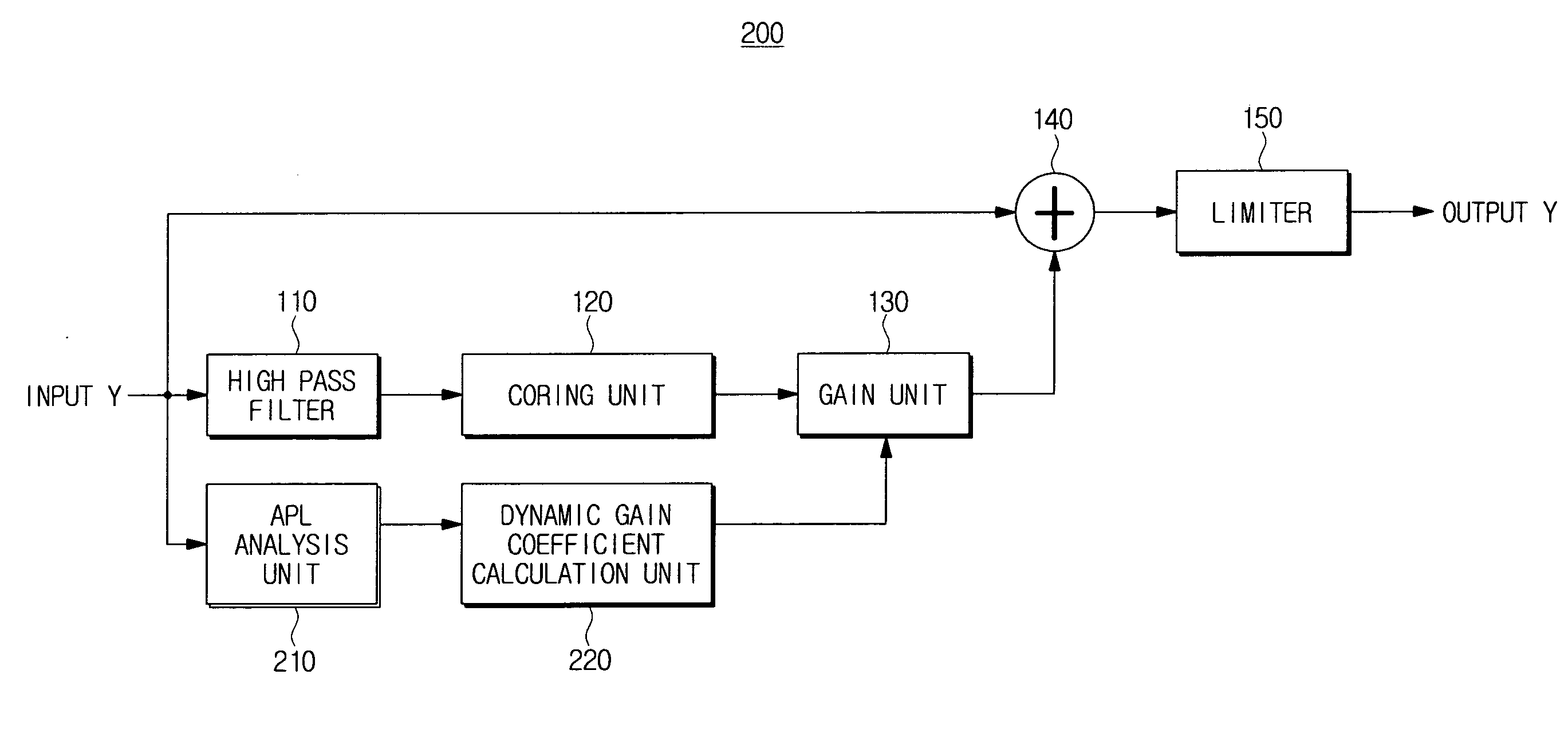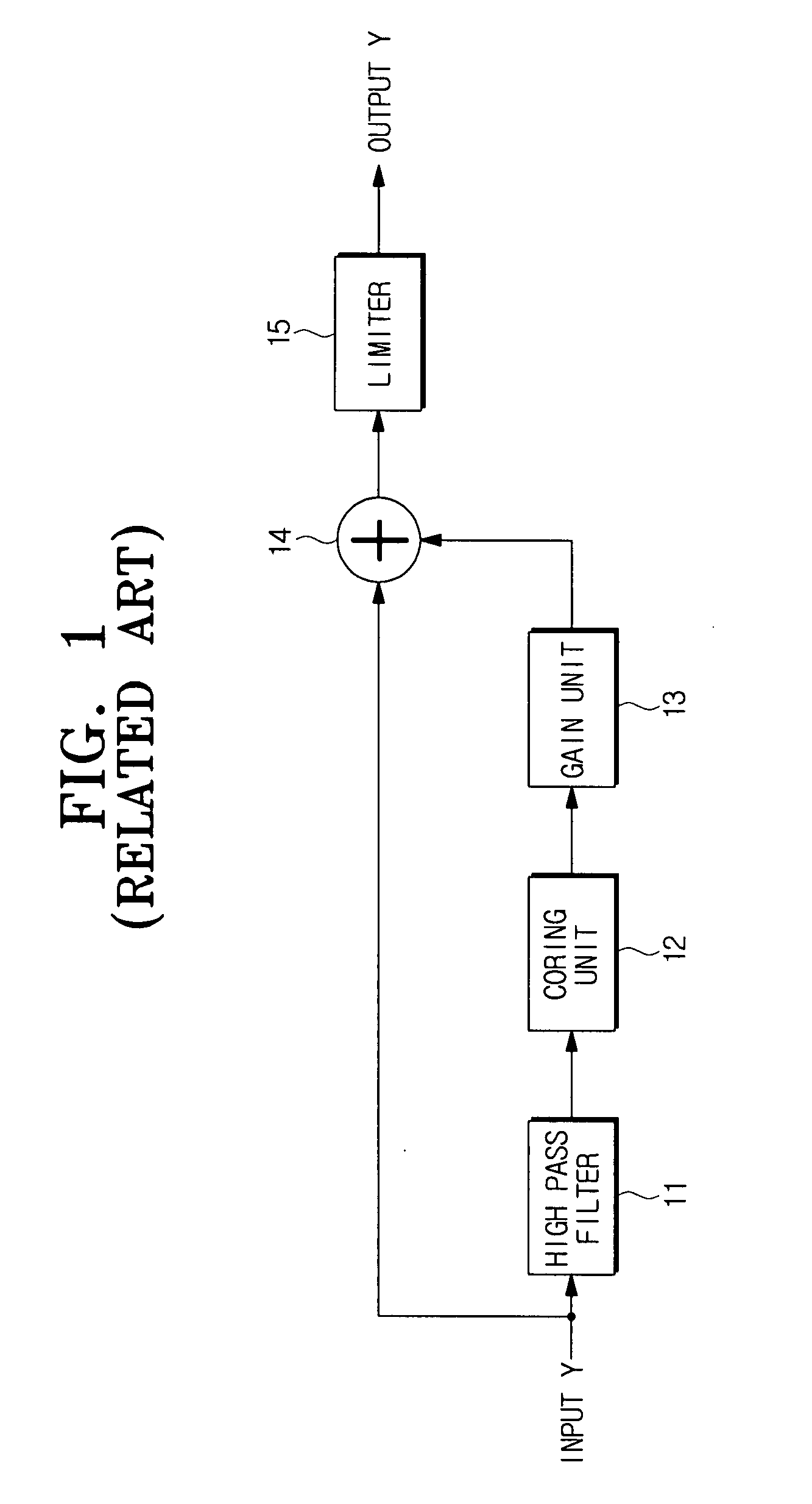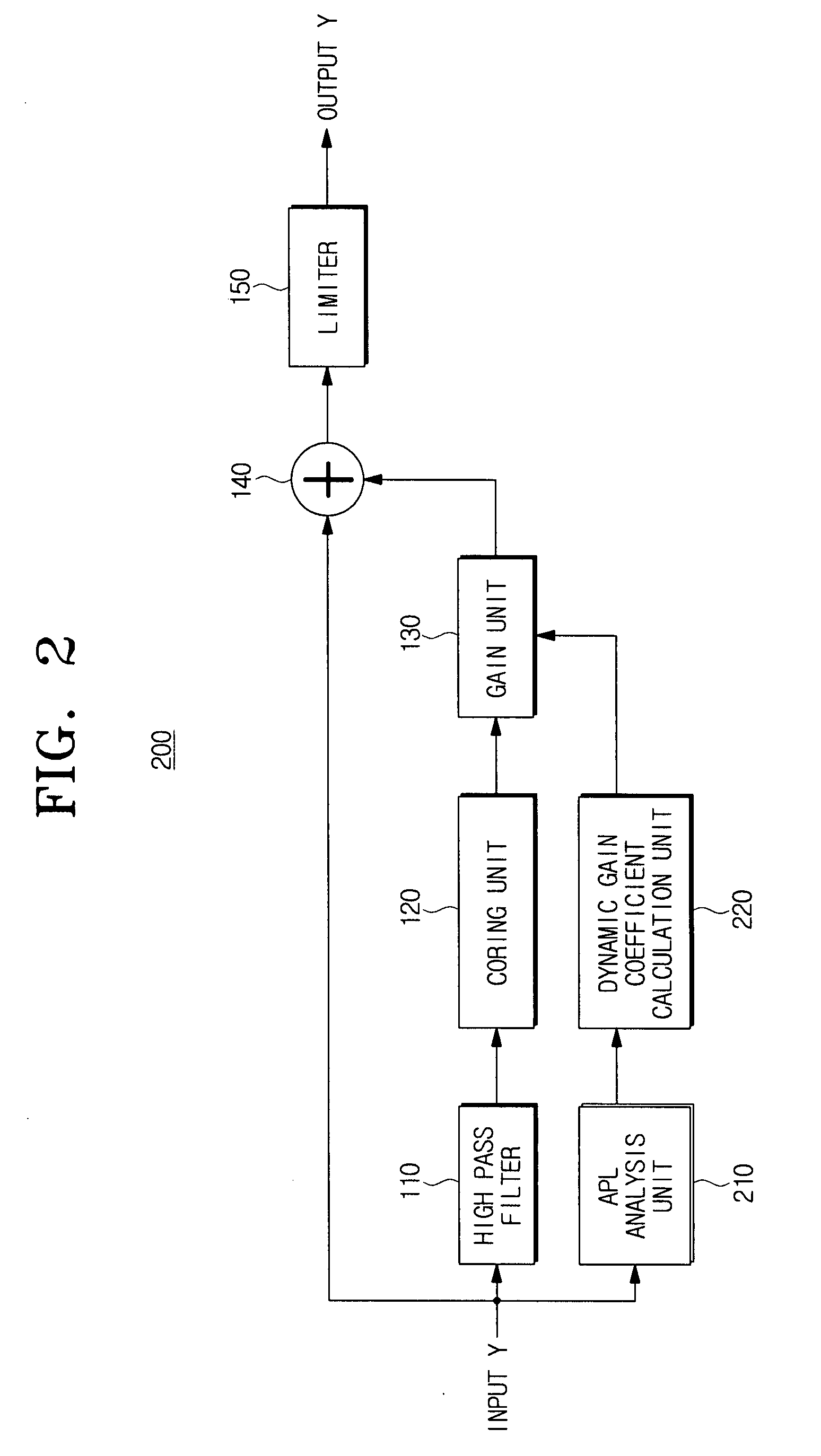Dynamic gain adjustment method based on brightness and apparatus thereof
- Summary
- Abstract
- Description
- Claims
- Application Information
AI Technical Summary
Benefits of technology
Problems solved by technology
Method used
Image
Examples
Embodiment Construction
[0029]The matters defined in the description, such as a detailed construction and elements, are provided to assist in a comprehensive understanding of embodiments of the invention, and are merely exemplary. Accordingly, those of ordinary skill in the art will recognize that various changes and modifications of the exemplary embodiments described herein can be made without departing from the scope and spirit of the invention. Also, descriptions of well-known functions and constructions are omitted for clarity and conciseness.
[0030]FIG. 2 is a block diagram illustrating the construction of a dynamic gain adjustment based on brightness according to an exemplary embodiment of the present invention.
[0031]The dynamic gain adjustment apparatus 200 comprises an HPF 110, a coring unit 120, a gain unit 130, a mixer 140, a limiter 150, an APL analysis unit 210, and a dynamic gain coefficient calculation unit 220.
[0032]The HPF 110 separates high frequency components from an input video signal.
[...
PUM
 Login to View More
Login to View More Abstract
Description
Claims
Application Information
 Login to View More
Login to View More - R&D
- Intellectual Property
- Life Sciences
- Materials
- Tech Scout
- Unparalleled Data Quality
- Higher Quality Content
- 60% Fewer Hallucinations
Browse by: Latest US Patents, China's latest patents, Technical Efficacy Thesaurus, Application Domain, Technology Topic, Popular Technical Reports.
© 2025 PatSnap. All rights reserved.Legal|Privacy policy|Modern Slavery Act Transparency Statement|Sitemap|About US| Contact US: help@patsnap.com



